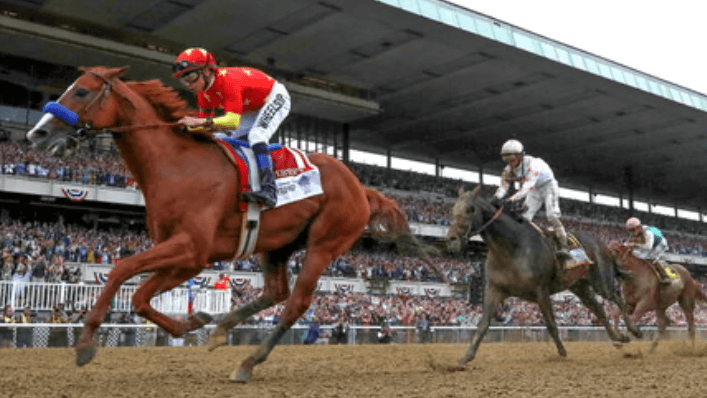The Triple Crown is the pinnacle of achievement in American horse racing. Winning all three races—the Kentucky Derby, Preakness Stakes, and Belmont Stakes—is a feat that combines speed, endurance, strategy, and an extraordinary connection between horse and rider. But how did the Triple Crown become an iconic symbol of excellence in horse racing?
This article explores the history, significance, and cultural impact of the Triple Crown.
1. The Origins of the Triple Crown
The concept of the Triple Crown was inspired by similar titles in British horse racing, where the English Triple Crown consisted of the 2,000 Guineas, Epsom Derby, and St. Leger Stakes.
- Early American Races: Each of the three U.S. races existed independently in the 19th century.
- First Triple Crown Winner: Sir Barton (1919) is recognized as the first horse to win all three races, although the term “Triple Crown” was not used until decades later.
- Official Recognition: The title gained formal recognition in the 1930s, after Gallant Fox achieved the feat in 1930.
The Triple Crown became a benchmark for equine greatness, symbolizing exceptional versatility and stamina.
2. The Three Races That Define the Triple Crown
Kentucky Derby
- Known as “The Run for the Roses,” this race is 1¼ miles at Churchill Downs in Louisville, Kentucky.
- Traditionally held on the first Saturday in May, it is famous for its pageantry, roses, and elite competition.
Preakness Stakes
- Held two weeks after the Derby at Pimlico Race Course in Baltimore, Maryland, the Preakness covers 1 3/16 miles.
- Known for a slightly shorter distance, it tests the horse’s ability to recover quickly from the Derby.
Belmont Stakes
- Called “The Test of the Champion,” the Belmont Stakes is 1½ miles at Belmont Park in New York, the longest of the three races.
- Its length demands stamina and endurance, separating true champions from mere contenders.
Together, these races test every aspect of a racehorse’s skill: speed, recovery, strategy, and resilience.
3. The Cultural Impact of the Triple Crown
The Triple Crown is more than a series of races; it is a cultural phenomenon:
- Media Attention: Winning or even competing in the Triple Crown garners nationwide coverage.
- Public Excitement: Fans follow the progress of horses across all three races with intense anticipation.
- Historical Legacy: Legendary horses like Secretariat, Affirmed, and American Pharoah are celebrated for achieving the Triple Crown.
The series embodies prestige, history, and the pursuit of equine excellence.
4. Why Winning the Triple Crown Is So Rare
Only 13 horses in history have completed the Triple Crown, highlighting its difficulty:
- Short Recovery Time: Horses must race three times in five weeks, challenging recovery and peak performance.
- Diverse Track Conditions: Each track presents unique challenges in distance, surface, and environment.
- Competition Intensity: Each race attracts elite three-year-old thoroughbreds, increasing difficulty.
This rarity makes a Triple Crown victory the ultimate testament to a horse’s talent and preparation.
5. Iconic Triple Crown Moments
- Secretariat (1973): Set record times in all three races, including an astonishing 31-length victory in the Belmont Stakes.
- American Pharoah (2015): Ended a 37-year Triple Crown drought, reigniting public fascination with the series.
- Affirmed (1978): Known for the dramatic rivalry with Alydar, illustrating the thrill of head-to-head competition.
These moments cemented the Triple Crown as legendary in sports history.
6. The Triple Crown Today
The Triple Crown remains a symbol of perseverance, excellence, and tradition:
- Global Recognition: International media and racing fans follow the series with excitement.
- Economic Impact: The races generate tourism, betting revenue, and global attention.
- Legacy Building: Winning the Triple Crown secures a horse’s place in history, influencing breeding and the sport’s culture.
It represents the ultimate challenge for owners, trainers, jockeys, and horses alike.
Conclusion
The Triple Crown became iconic because it represents the highest standard of achievement in horse racing. Its rich history, grueling demands, and memorable champions have created a legacy that transcends the sport. Each race tests speed, strategy, stamina, and heart, making Triple Crown winners legends in the eyes of fans and the annals of horse racing history.
In the end, the Triple Crown is not just a series of races—it is a celebration of perseverance, skill, and equine greatness.
